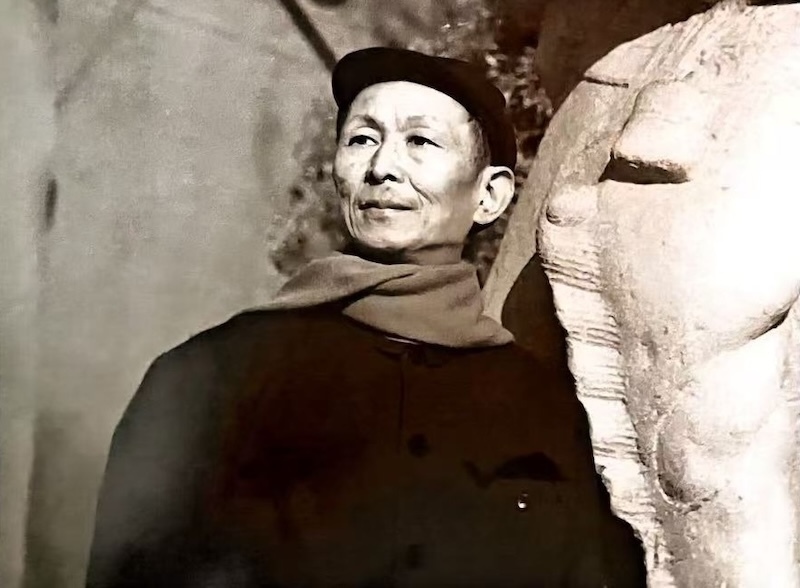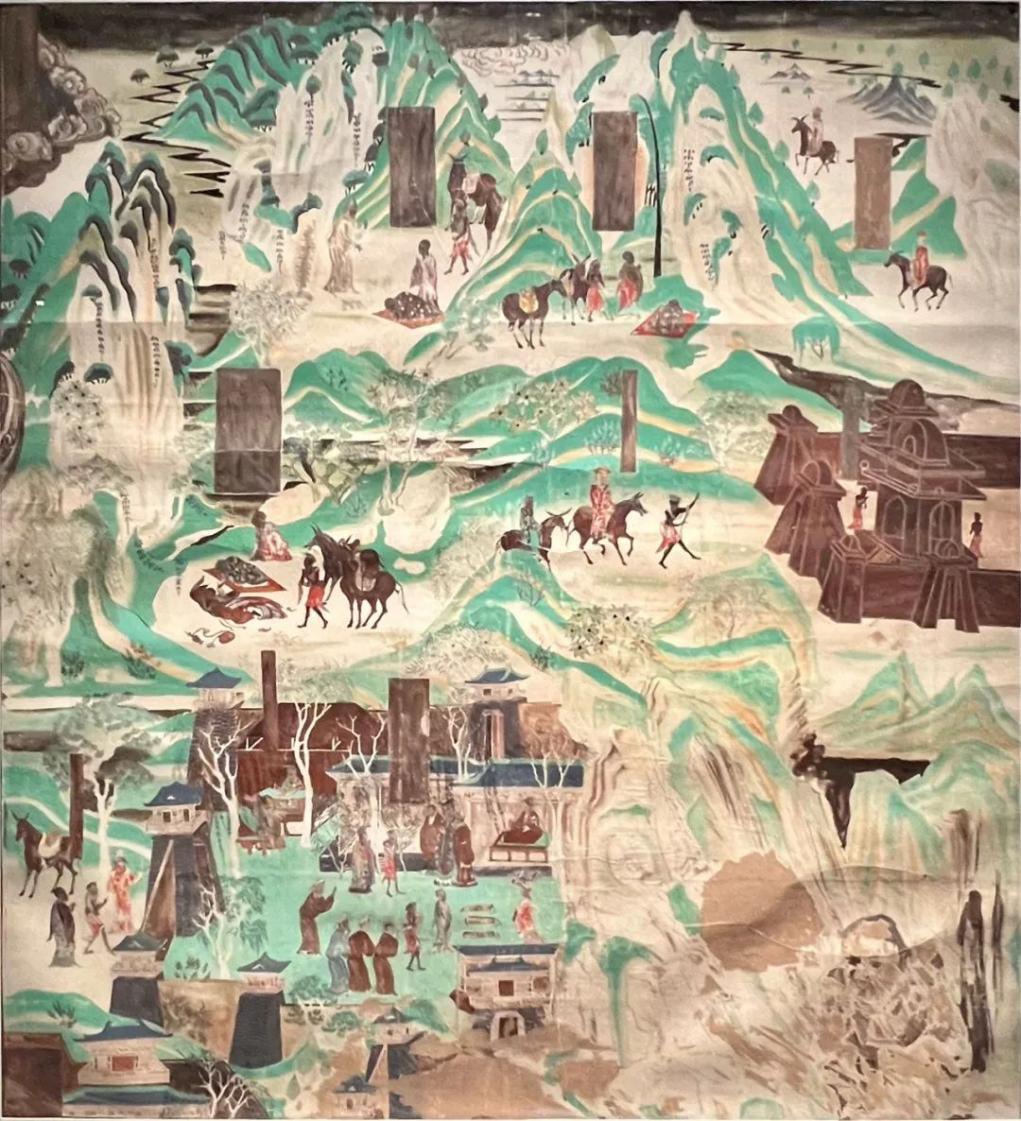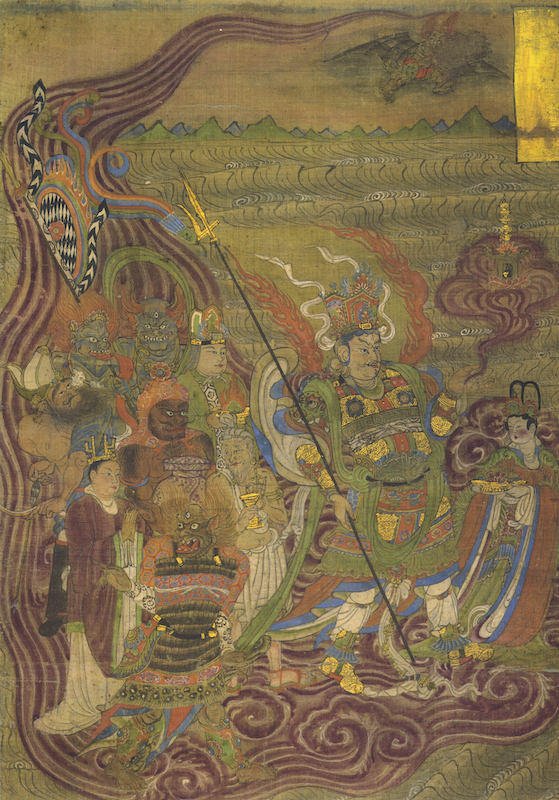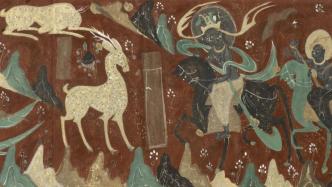
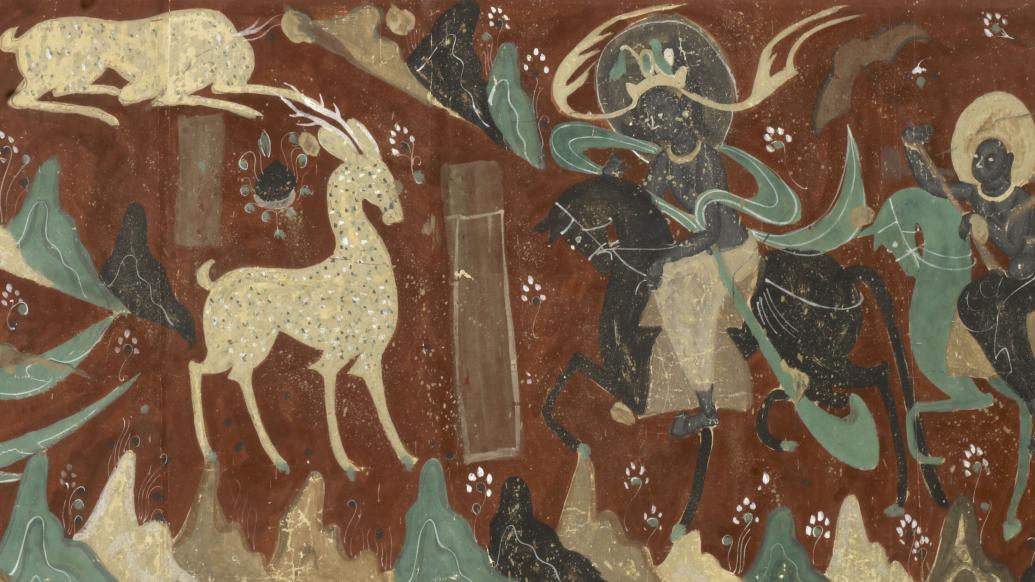
A history of Dunhuang Grotto art is also a history of Chinese religion and culture, which shows the world a magnificent historical picture.
On March 25, "Where This Heart Comes - Dunhuang Art Copying and Spiritual Inheritance Art Exhibition" was exhibited at the West Hall of Suzhou Museum.
"Different from previous Dunhuang-themed exhibitions, this exhibition revolves around three aspects: Dunhuang frescoes, Dunhuang grotto art, Dunhuang studies and literature, with Zhang Daqian, Chang Shuhong, Xie Zhiliu, Lu Shi, Duan Wenjie and other artists copying and studying Dunhuang art. Through the restoration of Cave 275, the earliest grotto in Dunhuang, and the earliest original record manuscript of Ye Changchi's "Yuandulu Diary" in the Dunhuang Sutra Cave, and other 116 fine cultural relics, it traces the history of Dunhuang, displays Dunhuang art, tells Dunhuang stories, and inherits the history of Dunhuang. The spirit of Dunhuang." said Xie Xiaoting, curator of Suzhou Museum.
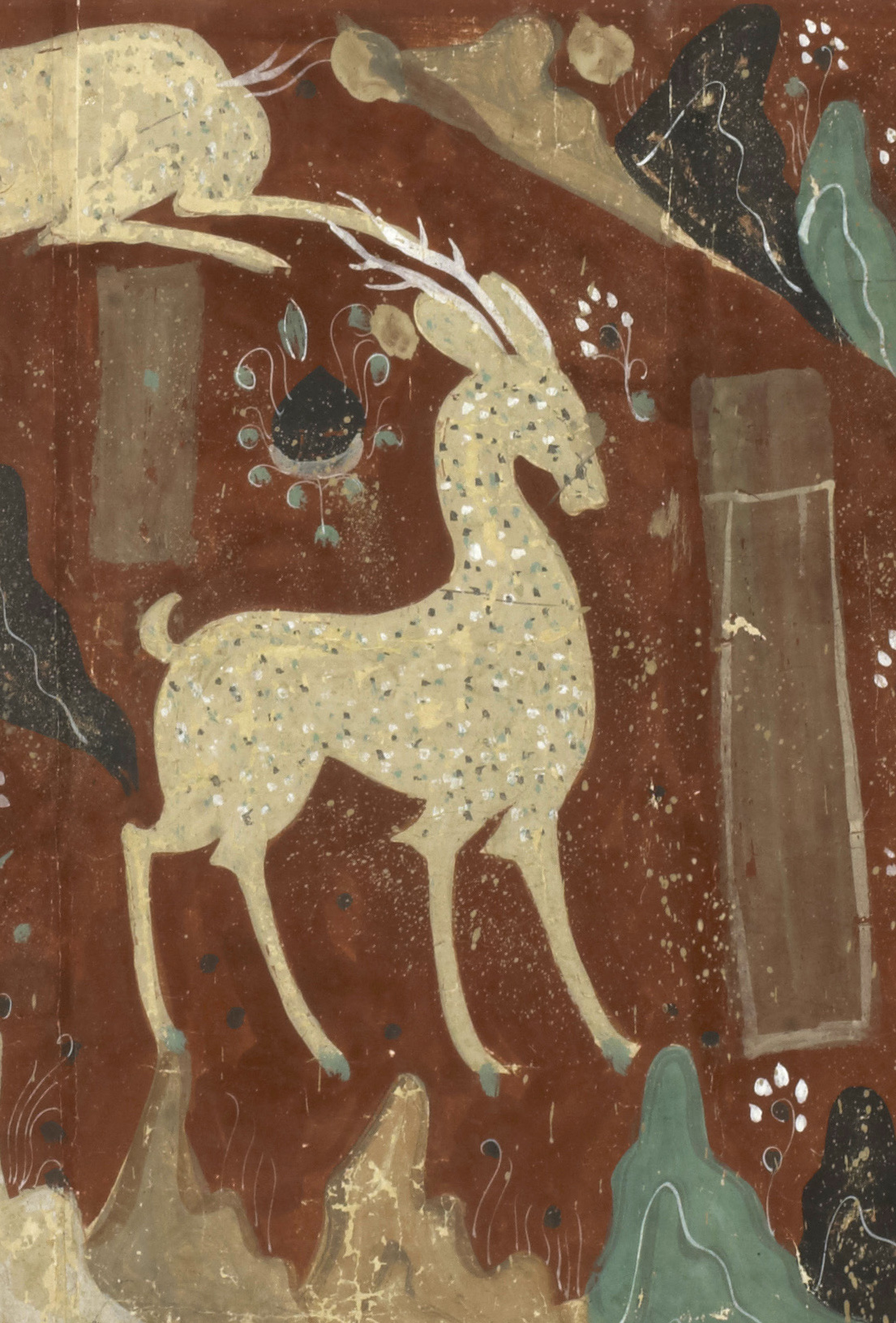
Chang Shuhong's copy of the Northern Wei Dynasty Deer King Jatsen Scroll (partial) Collection of Dunhuang Academy
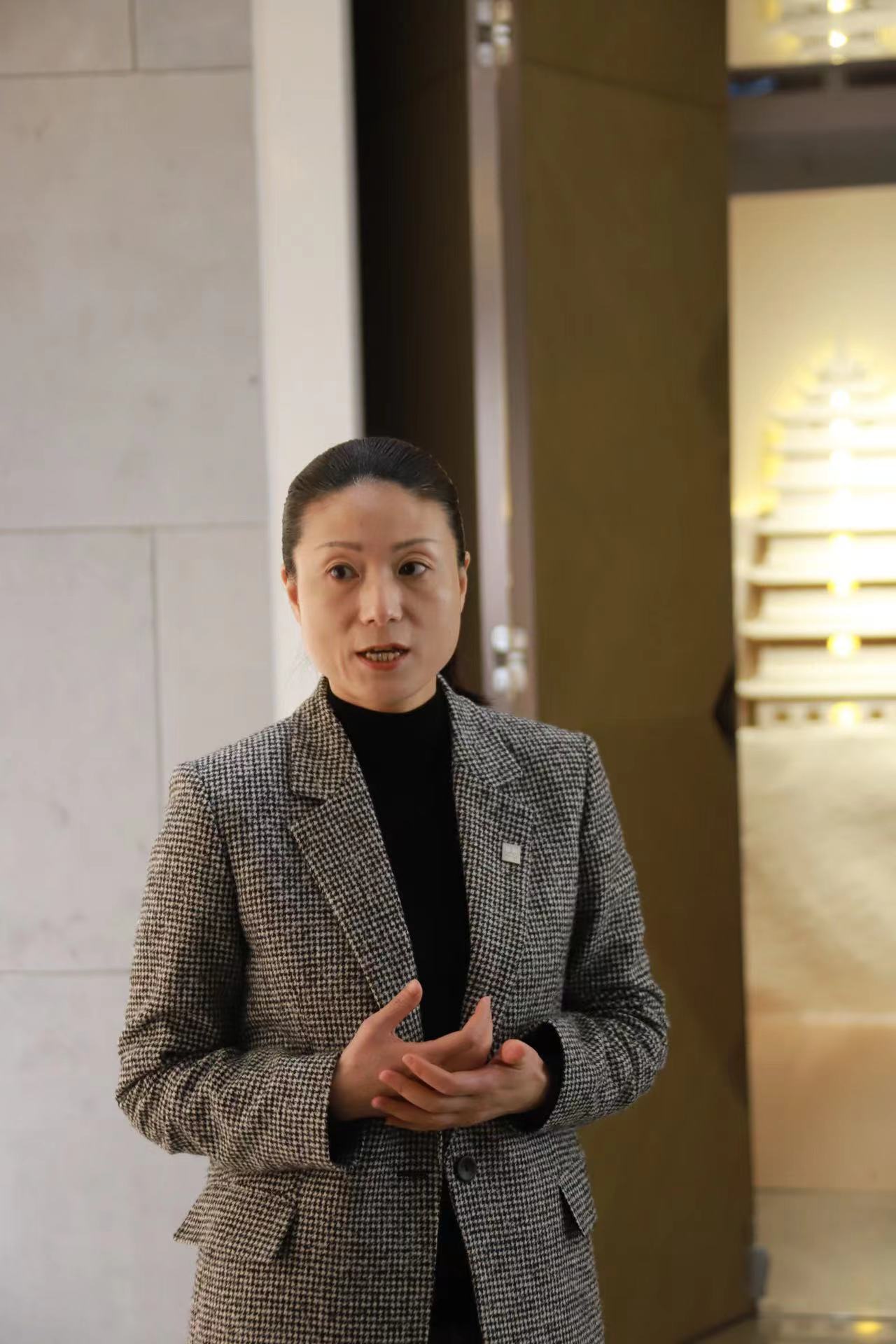
Xie Xiaoting, curator of Suzhou Museum, introduced "Where This Heart Comes - Dunhuang Art Copying and Spiritual Inheritance Art Exhibition".
In 1987, the Dunhuang Mogao Grottoes, as the world's largest surviving sacred site of Buddhist grotto art, successfully applied for World Heritage Sites and became one of the world's cultural heritage sites. There are six standards for applying for world cultural heritage, as long as one of them is met, the application conditions are met, and the six standards of Dunhuang Mogao Grottoes are all met. Like Mogao Grottoes, there are only two cultural heritage sites in the world that meet all six criteria: Mogao Grottoes and Venice. Just as Mr. Ji Xianlin, a master of Chinese studies, said: "There are only four cultural systems in the world that have a long history, a vast territory, self-contained systems, and far-reaching influence: China, India, Greece, and Islam. There is no fifth one, and these four cultural systems There is only one place where they converge, which is China's Dunhuang and Xinjiang regions, and there is no other place."
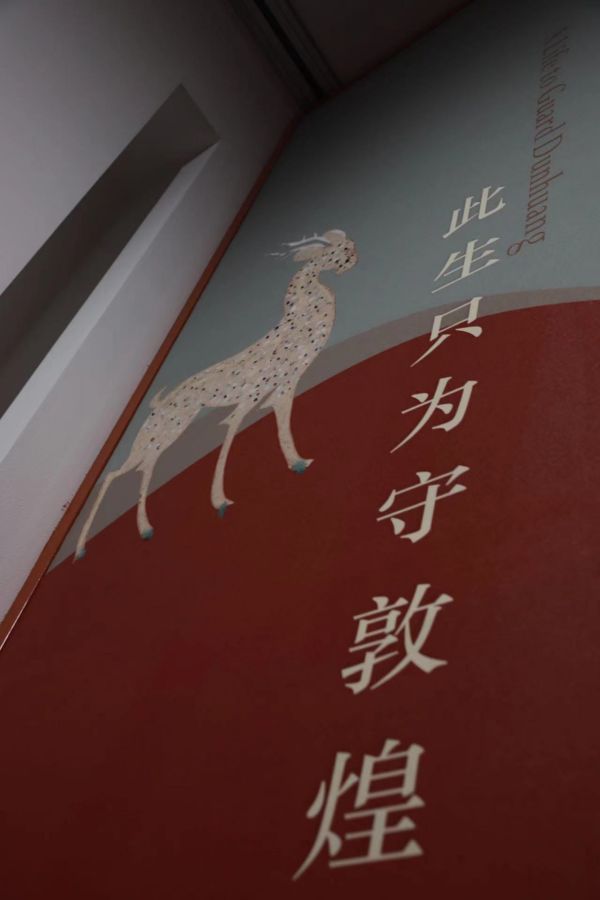
"Where This Heart Comes - Dunhuang Art Copying and Spiritual Inheritance Art Exhibition" site
"This exhibition is another themed event of the "World Cultural Heritage Series" after the "Single Fragrance of Begonias——Discovery and Inheritance of Dazu Rock Carvings". The Dunhuang Research Institute, Sichuan Provincial Museum, Zhejiang Provincial Museum, Suzhou Library 116 pieces/sets of precious calligraphy, painting, cultural relics and documents, and jointly host this cultural feast with rich connotations, let the "Dunhuang spirit" infiltrate people's hearts, and inspire contemporary people to think about the mission they should undertake in the face of their own culture." Suzhou Museum Dunhuang Exhibition Content Curator Wang Zhen's on-site tour introduction.
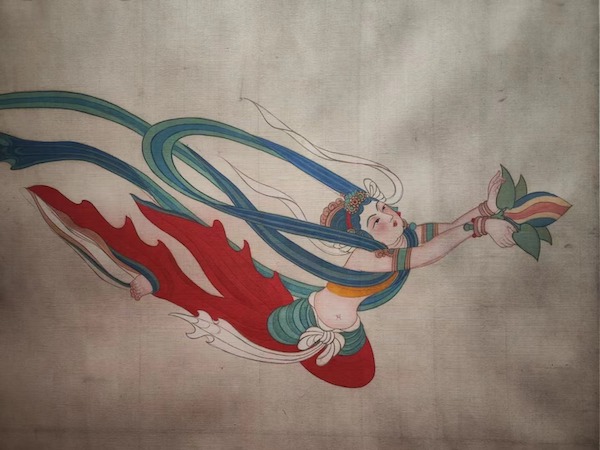
"Where This Heart Comes - Dunhuang Art Copying and Spiritual Inheritance Art Exhibition" site
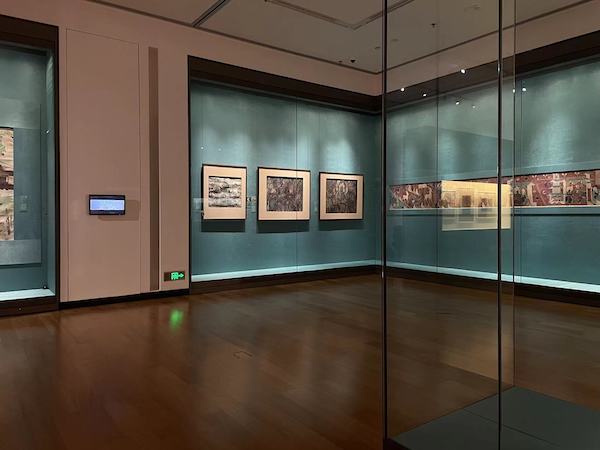
"Where This Heart Comes - Dunhuang Art Copying and Spiritual Inheritance Art Exhibition" site
The Dunhuang murals displayed in the exhibition involve various types such as story paintings, sutra paintings, portrait paintings, portraits of supporters, and decorative patterns, and cover different techniques such as restoration copying, current state copying, and finishing copying. Every line in the painting condenses the youth of generations of Dunhuang guardians. They communicate with the ancients through the paper and pen in their hands, explore the beauty of Dunhuang art, and let people appreciate the thousand-year-old benevolent eyes and flying body of the Buddha up close. posture. The cultural penetration and artistic vitality contained in it cannot be achieved without the integration of regeneration and realistic care, which is also the spirit of the age of Dunhuang art.
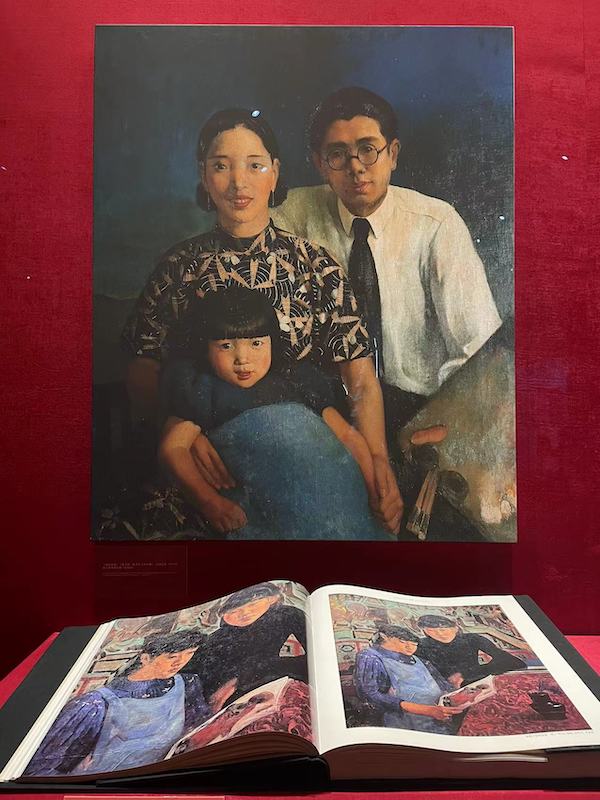
"Where This Heart Comes - Dunhuang Art Copying and Spiritual Inheritance Art Exhibition" site
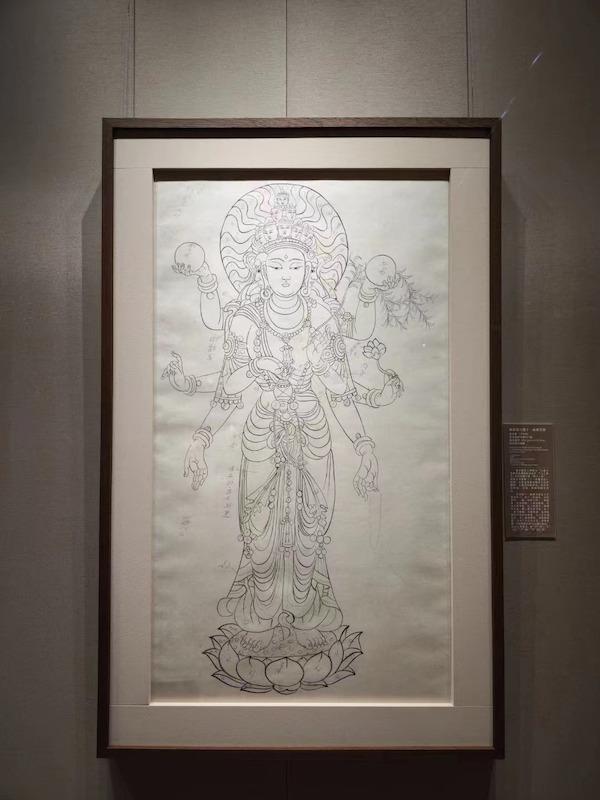
"Where This Heart Comes - Dunhuang Art Copying and Spiritual Inheritance Art Exhibition" site

"Where This Heart Comes - Dunhuang Art Copying and Spiritual Inheritance Art Exhibition" site
"Ascetic monks" in art
The exhibition kicked off with a self-portrait of Zhang Daqian. Zhang Daqian painted many self-portraits throughout his life. This painting was written as a play and presented to a friend when he temporarily lived in Zhaojue Temple in Chengdu after returning from Dunhuang. Zhang Daqian incorporated calligraphy into painting, using concise and general brush and ink to depict his own spiritual outlook, with both form and spirit.
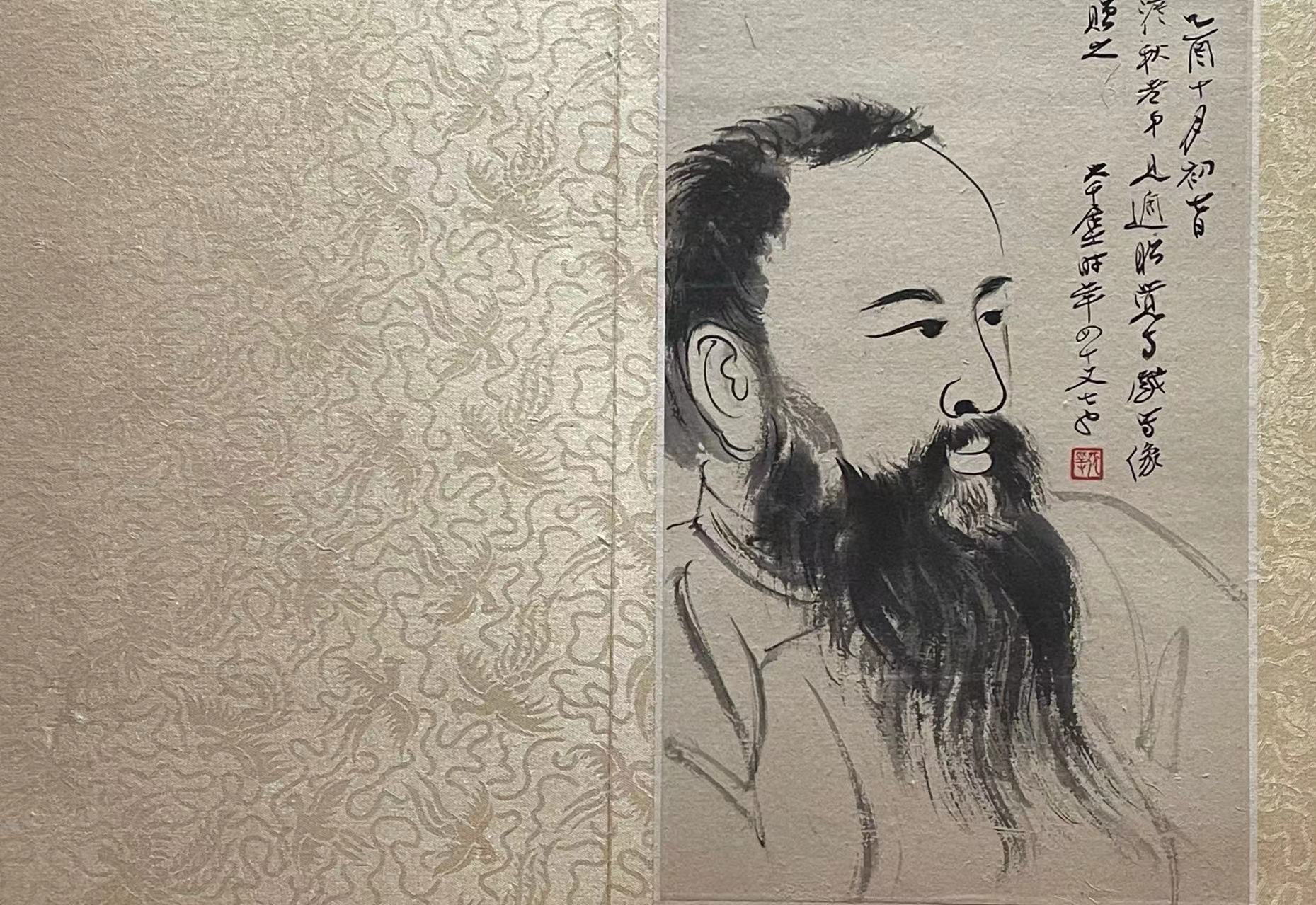
Ink and wash on paper, Zhang Daqian, 1945, 32.3cm×19.9cm, Sichuan Museum Collection
Mr. Zhang Daqian (1899-1983) was the first domestic artist to visit Dunhuang, and also the first artist to introduce Dunhuang art to the world on a large scale. Writer Gao Yang commented on him: "Zhang Daqian was an 'ascetic monk' in art in Dunhuang, and he was spiritually similar to Xuanzang in learning scriptures from the Western Regions, which showed his courage, perseverance and devotion to art. He lived in Dunhuang for more than two years. The life itself is a great achievement." Zhang Daqian copied a total of 276 murals in Mogao Grottoes and Yulin Grottoes in Dunhuang, most of which were silk paintings and Chinese paintings with color on paper, involving story paintings, scriptures, statue paintings, and offerings. Portraits, caisson decoration patterns and other themes.

In 1943, Zhang Daqian copied it in the corridor of the fifteenth cave of Yulin Grottoes in Dunhuang
During the two years and seven months from the late spring of 1941 to 1943, Zhang Daqian and his entourage completed 309 codes in Mogao Grottoes, 19 codes in West Thousand Buddha Caves, 29 codes in Yulin Grottoes, and 6 codes in Shuixiakou. He is not only one of the forerunners among Chinese people who conducted comprehensive and systematic on-the-spot surveys and recorded the contents of Dunhuang Grottoes, but also an important founder of Dunhuang art research. Zhang Daqian's son Zhang Xinzhi, nephew Zhang Bide, disciples Xiao Jianchu and Liu Lishang, friend Xie Zhiliu, painter Zhang Zongwei, oil workers Dou Zhanbiao and Li Fu, lama painters Angji, Ge Lang, Sanzhi, Xia Wucailang, Dujie Linqie and others participated successively To the work of copying Dunhuang murals. Throughout Mr. Zhang Daqian's artistic journey in different periods, copying Dunhuang's experience has brought about great changes in Daqian's artistic creation. The life paths of many aspiring young people have aroused the world's love and pursuit of the treasure of Dunhuang, a world cultural heritage, and have contributed to the inheritance.

Copying Five Hundred Robbers Became Buddha Scroll Zhang Daqian 1941-1943 Mogao Grottoes Northern Zhou Dynasty Cave 296 Ink and color on silk Sichuan Museum Collection

Copying Five Hundred Robbers Became Buddha Scroll Zhang Daqian 1941-1943 Mogao Grottoes Northern Zhou Dynasty Cave 296 Ink and color on silk Sichuan Museum Collection

Copying Five Hundred Robbers Became Buddha Scroll Zhang Daqian 1941-1943 Mogao Grottoes Northern Zhou Dynasty Cave 296 Ink and color on silk Sichuan Museum Collection
Mr. Chang Shuhong (1904-1994) is a representative of "Dunhuang people" and a well-deserved "Dunhuang patron saint". He dedicated his whole life to Dunhuang. In 1935, Mr. Chang Shuhong saw the "Dunhuang Grottoes Catalog" by the Frenchman Pelliot on the banks of the Seine-Marne River in Paris, and was amazed by the paintings unearthed from the Dunhuang Scripture Cave collected by the Guimet Museum. It made him feel responsible to return to the motherland, inherit and carry forward the great art of Dunhuang. He gave up everything, devoted himself to Dunhuang above the sea of sand, and established the "Dunhuang Art Research Institute".
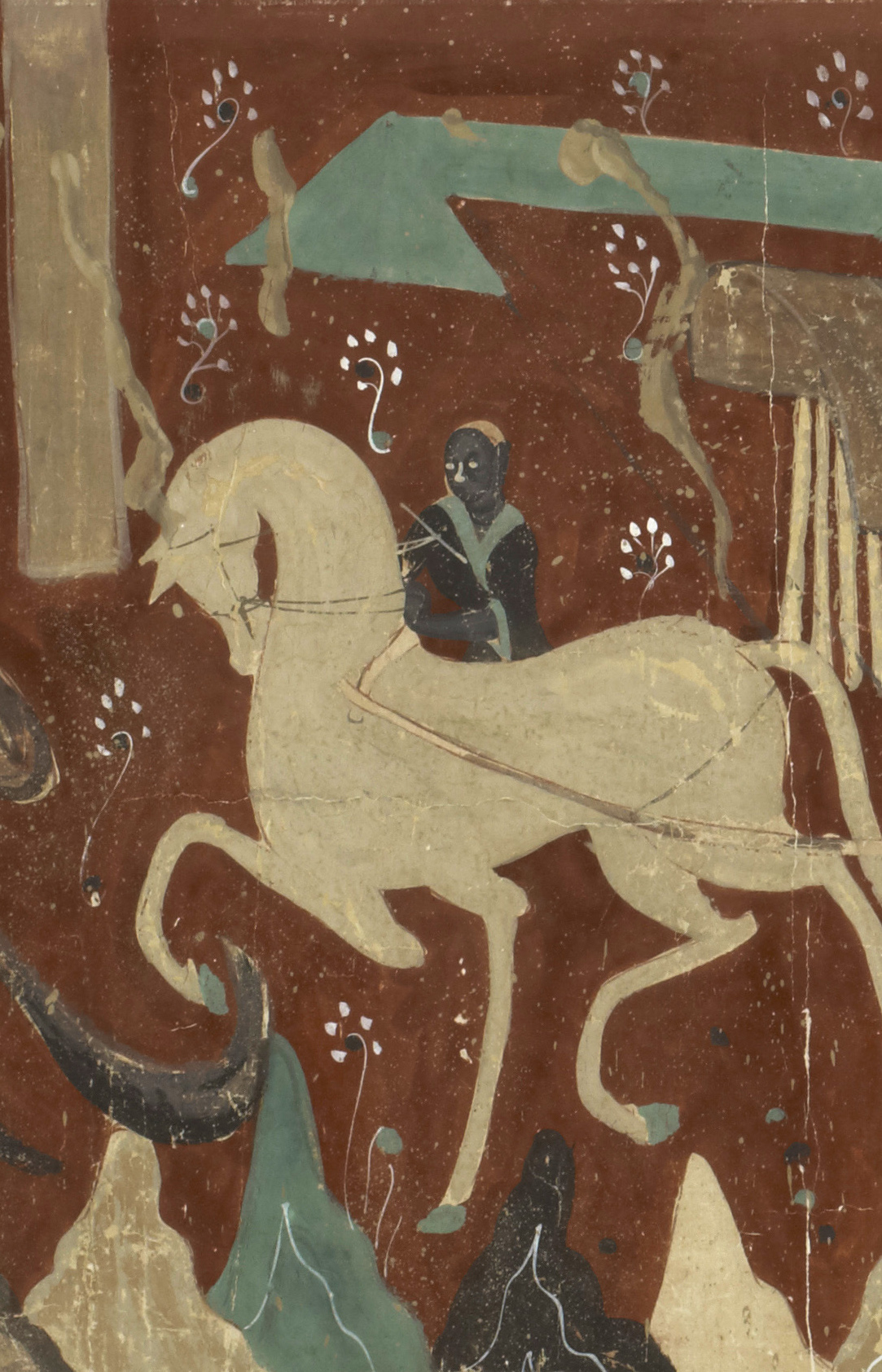
Chang Shuhong's copy of the Northern Wei Dynasty Deer King Jatsen Scroll (partial) Collection of Dunhuang Academy

Chang Shuhong's Copy of the Northern Wei Dynasty Deer King Jatsen Scroll Collected by Dunhuang Academy

Chang Shuhong's Copy of the Northern Wei Dynasty Deer King Jatsen Scroll Collected by Dunhuang Academy

Chang Shuhong's Copy of the Northern Wei Dynasty Deer King Jatsen Scroll Collected by Dunhuang Academy
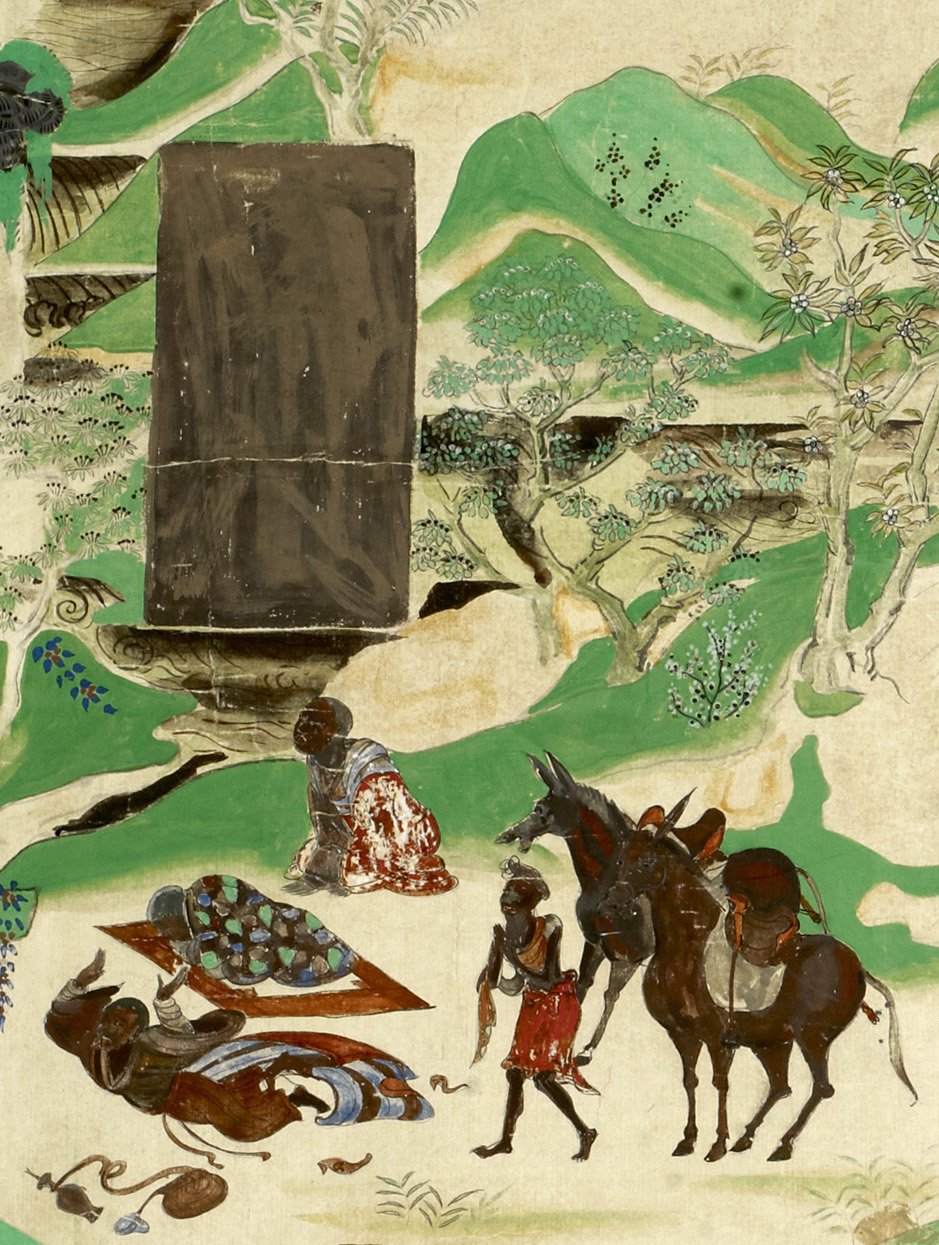
Chang Shuhong's copying of the Dharani Sutra of Buddha Ding Zunsheng in the Tang Dynasty (partial) Collection of Dunhuang Academy
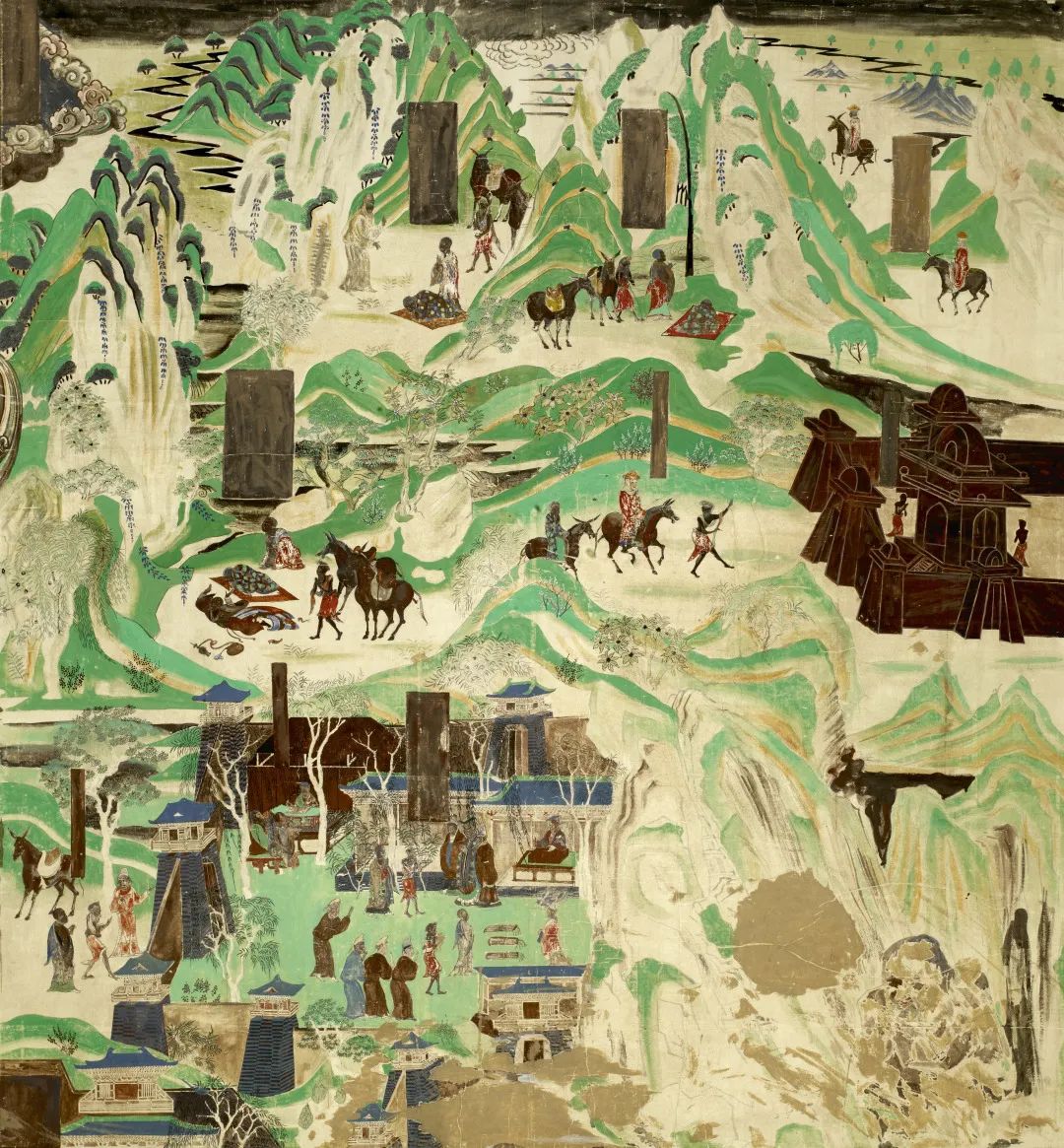
Chang Shuhong's imitation of the Dharani Sutra of Buddha Ding Zunsheng in the prosperous Tang Dynasty, collected by Dunhuang Academy

Chang Shuhong working in Mogao Grottoes
It can be said that Mr. Chang Shuhong's original intention to devote himself to Dunhuang art is to inherit the excellent traditional Chinese art and create art in the new era. The copied murals exhibited this time include the Northern Wei Dynasty Cave 257 "Deer King Jataka" and Cave 217 "Buddha Zunsheng Dharani Sutra" and other high-quality copies, which represent the achievements of Mr. Chang Shuhong's early copying work. In his spare time, he went to Dunhuang and Northwest China to collect and sketch. The sketches such as "Dunhuang Mogao Grottoes Temple Fair on the Eighth Day of April" and "Evening on Sanwei Mountain" show the artist's deep affection for Dunhuang.

Duan Wenjie and Zhao Junrong copying the picture of the governor's wife worshiping Buddha in the prosperous Tang Dynasty, collected by Dunhuang Academy
Duan Wenjie (1917-2011) was a painter, an art educator, and an expert in Dunhuang studies. He has been rooted in the Dunhuang desert for sixty years and is known as the "hermit of the desert". In 1944, Mr. Duan Wenjie was attracted to Dunhuang by his artistic charm after queuing up to watch the "Exhibition of Copying Dunhuang Murals by Zhang Daqian" in Chongqing. He copied a large number of Dunhuang murals, and summed up the standards, requirements and methods of mural copying. For example, the "Picture of the Governor's Wife Respecting the Buddha" exhibited in this exhibition was reproduced and copied on the spot by Mr. Duan Wenjie. The copied paintings on the basis of his copied books have inspired the copying work of later generations of artists. This painting can be regarded as the largest and most magnificent portrait of a supporter preserved in the Mogao Grottoes. "Today, when we go to Cave 130 in Dunhuang, you will find that this mural has been completely changed and nothing can be seen, so in a sense, Mr. Duan Wenjie is renewing the life of this mural." Wang Zhen said.

Copying the picture of the governor's wife worshiping Buddha in the prosperous Tang Dynasty (partial)
Duan Wenjie devoted himself to the study of Dunhuang art through copying. Under his advocacy and auspices, he successively published dozens of volumes of anthologies and catalogs related to Dunhuang research. In addition, the journal "Dunhuang Studies" has also become an important carrier of international Dunhuang studies and has had a very far-reaching impact.
Like several representative artists, there are many other artists who copy Dunhuang frescoes because of their persistent pursuit of Dunhuang art. own responsibility.
1:1 Copy Beiliang Cave 275, and "walk into" Mogao Grottoes personally
The exhibition also introduced one of the earliest caves in Dunhuang from the Dunhuang Academy, the largest replica cave of Cave 275 among the three caves in Beiliang. The audience can experience the classic 1:1 digital, high-fidelity, replica art cave immersively Enter the Dunhuang Mogao Grottoes.
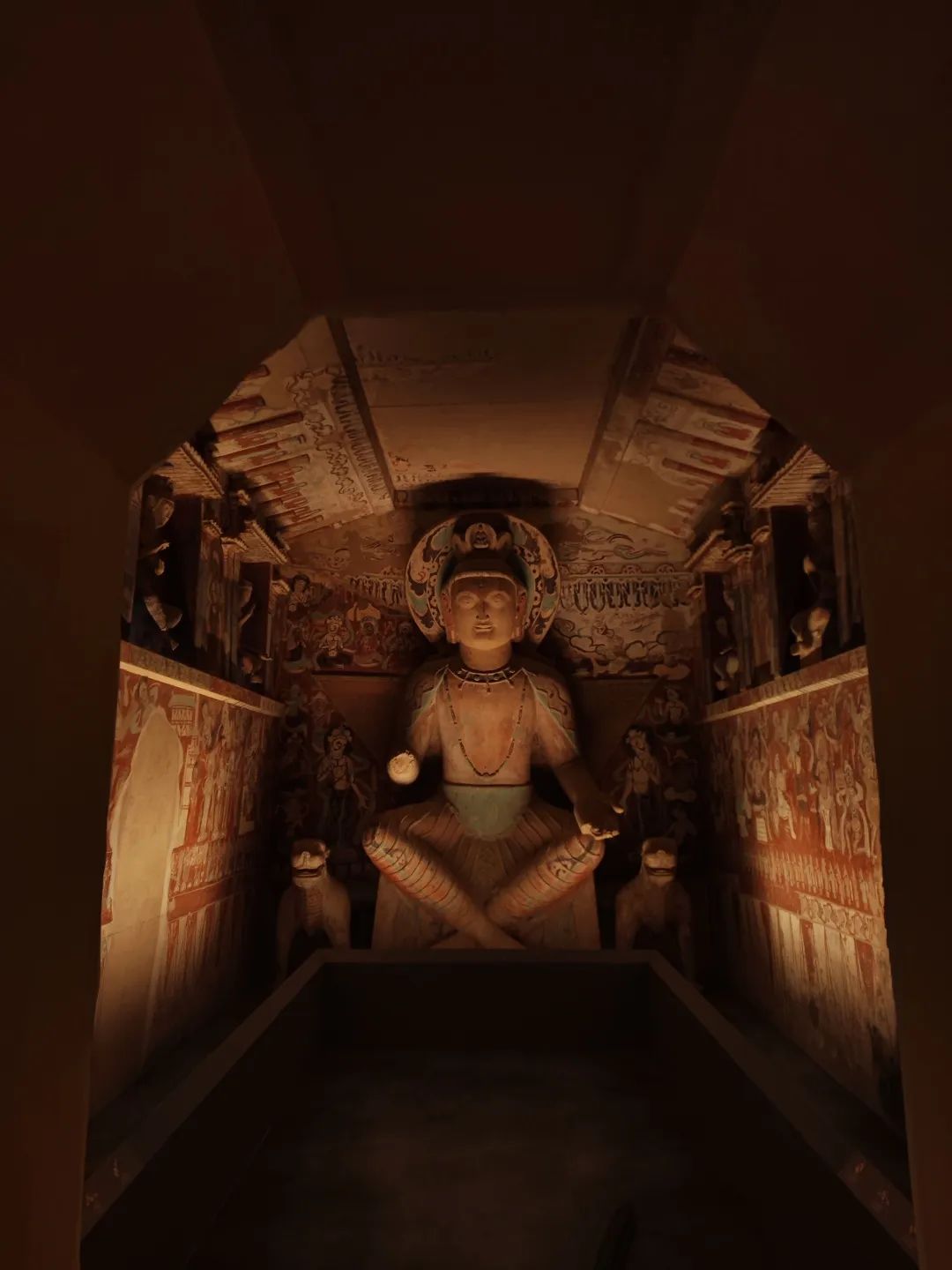
Cave 275 Replica Cave
This cave was built in the Northern Liang Dynasty in the late Sixteen Kingdoms period, and it is one of the earliest existing caves in Mogao Grottoes. The shape of the cave is unique, and it is a vertical and rectangular hall cave with a roof. The flat chess pattern in the center of the cave roof and the purlin and rafter structures on the herringbone slope are both expressed in a combination of painting and sculpture, symbolizing the traditional wooden structure. In the center of the front wall is Maitreya Bodhisattva, with his legs crossed and sitting on a double lion seat. The statue of Kusa is tall, straight and vigorous.
He wears a crown of Buddha on his head, curly hair shawl, a necklace on his chest, a long scarf on his shoulders, and a long skirt around his waist. The face is plump and round, the expression is peaceful, simple and detached, holy and solemn, showing a strong style of the Western Regions. The folds and undulations of the clothes are expressed by sticking mud strips and engraved lines, which has a great sense of rhythm and decorative interest.
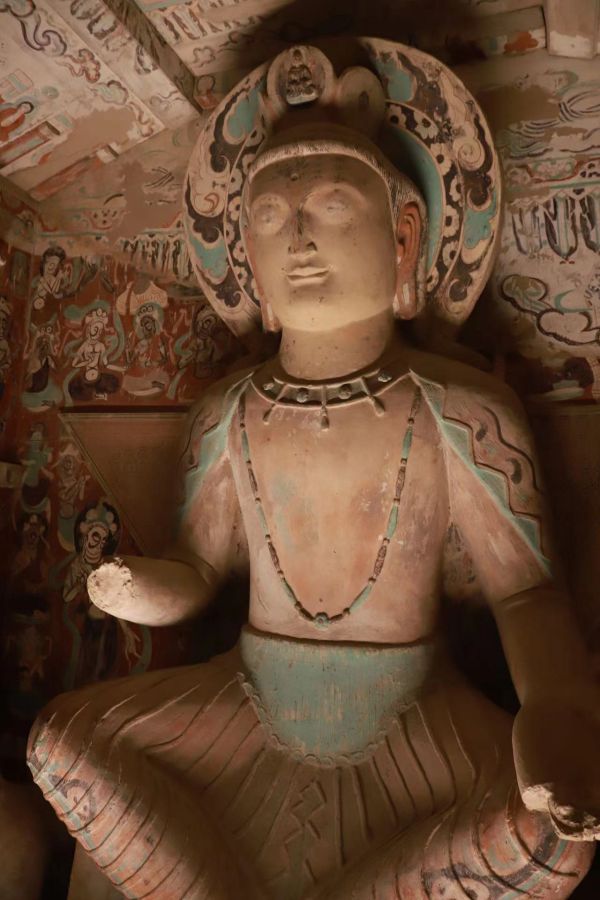
Cave 275 Replica Cave Maitreya Bodhisattva

Cave 275 Replica Cave
The upper sections of the north and south walls have symmetrical niches. The first and second niches from the west are que-shaped square niches, and the third niche is a round coupon-shaped double-tree niche. In the middle section of the south wall, there is a painting of the Four Gates of Journey in the Biography of Buddha, which shows the scene where Prince Siddharth met the old man and the Samana, and the rest does not exist. In the middle of the north wall, five Jataka stories are painted side by side. The composition of the story paintings is concise and compact, all expressing the hero's spirit of self-sacrifice and saving sentient beings. The scenery and characters in the painting are arranged side by side regardless of distance, and the protagonist is intentionally enlarged to make his image more prominent. The images, costumes, and smudges of the characters are all obviously influenced by the art of the Western Regions, and the style is simple and vigorous.
Que, as the most representative ceremonial building in traditional China, symbolizes the supreme imperial power. The combination of Han Que and Buddhist niches to represent the Tushitian Palace where Maitreya Bodhisattva lives is the first in this cave, and it has appeared many times in Dunhuang Northern Dynasties grottoes. However, this form is rarely found in many grottoes in the mainland, which is quite intriguing.

"Where This Heart Comes - Dunhuang Art Copying and Spiritual Inheritance Art Exhibition" site

"Where This Heart Comes - Dunhuang Art Copying and Spiritual Inheritance Art Exhibition" site
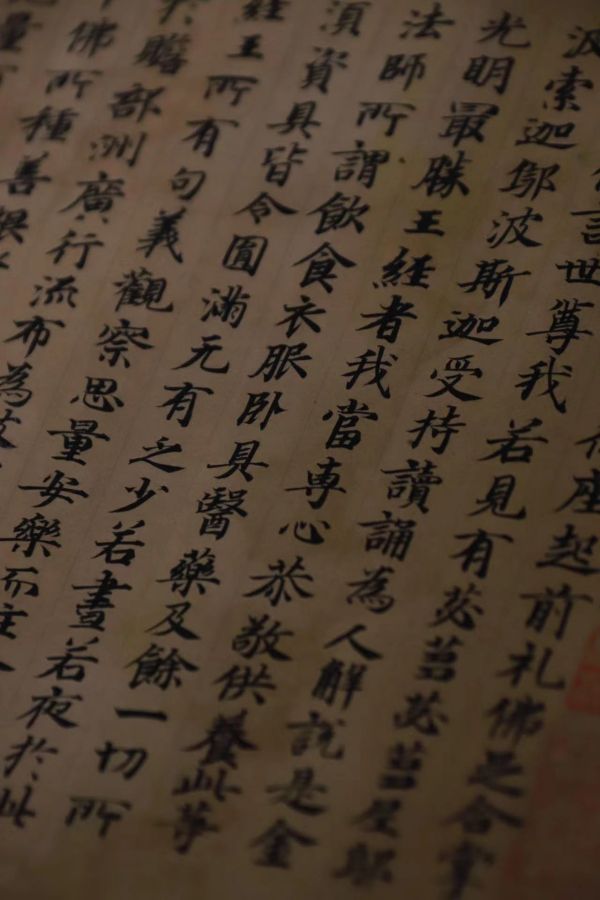
"Where This Heart Comes - Dunhuang Art Copying and Spiritual Inheritance Art Exhibition" site
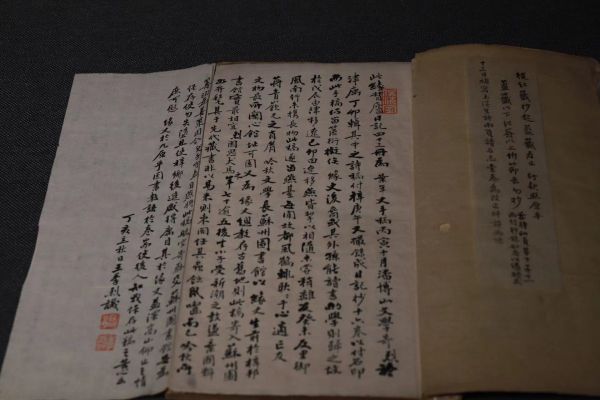
"Where This Heart Comes - Dunhuang Art Copying and Spiritual Inheritance Art Exhibition" site
In the section on Dunhuang Studies and Documents at the end of the exhibition, the digital scripture cave and the original manuscript of Ye Changchi’s "Yuandulu Diary" are displayed together for the first time, and the "Special Topic of the Library Cave" shows the breadth and grandeur of Dunhuang studies. Among them, Ye Changchi's "Yuandulu Diary" recorded the exact year of the discovery of the Dunhuang scripture cave for the first time (article on the seventh day of September in the 30th year of Guangxu), which is the earliest original document material recorded in the Dunhuang scripture cave.

Poster of "Where This Heart Comes - Dunhuang Art Copying and Spiritual Inheritance Art Exhibition"
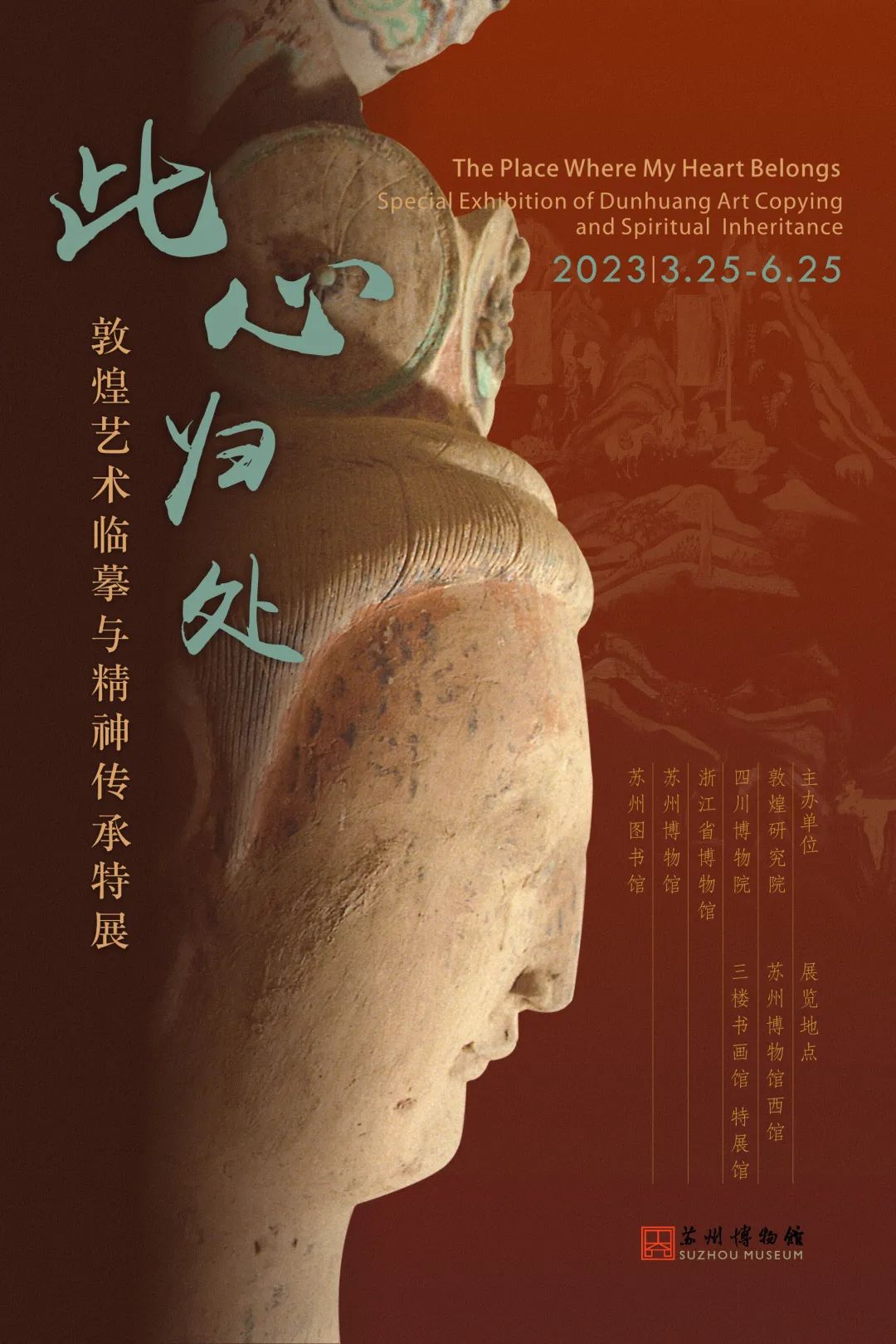
Poster of "Where This Heart Comes - Dunhuang Art Copying and Spiritual Inheritance Art Exhibition"
It is reported that the exhibition will be held from March 25th to June 25th.
